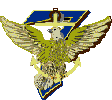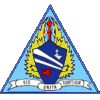| |
|
|
|
Scott Douglas Ketchie
Captain
VMA(AW)-224, CVW-15, 7TH FLEET United States Marine Corps Birmingham, Alabama August 19, 1947 to March 05, 1979 (Incident Date April 09, 1972) SCOTT D KETCHIE is on the Wall at Panel W2, Line 134 See the full profile or name rubbing for Scott Ketchie |
  -224.gif) |
  |
|
I have worn a bracelet with Scott Ketchie's name on it since November of 1972. My son, who was also a Marine, had the pilot of Capt. Ketchie's plane as an instructor at Cherry Point which kind of brought things into a full circle. I have been to the Moving Wall and made a rubbing and I would like to see his name included on this site.
"No man dies until he is forgotten."
Anne Poland |
|
My name is Tom Hens. I went through NFO flight school with Scott at NAS Pensacola and I believe we were together later at MCAS Cherry Point before he left for WestPac. I came across your website today. Scott was a good man and I became friends with the triumvirate of friends from Alabama, Scott, Ron Gilbert (an RF-4C NFO) and Bob Jacobs (an F-4J RIO who was killed in an accident at the NATO base in Sigonella, Italy). It is still hard to believe that many friends of my service days are gone. I always hoped Scott would be found.
Thomas R. Hens |
A Note from The Virtual WallAlthough Marine aviators went through the same training syllabus as their Navy counterparts, Marine fixed-wing squadrons rarely deployed aboard aircraft carriers during the Vietnam war - in fact, after 1965 the only one which did was Marine All-Weather Attack Squadron 224. When USS CORAL SEA deployed on 12 Nov 1971 VMA(AW)-224 provided Carrier Air Wing 15's A-6A and KA-6D component.When the North Vietnamese staged a conventional invasion of South Vietnam in the spring of 1972 (the so-called "Easter Offensive"), CORAL SEA was one of the carriers in the Gulf of Tonkin and Air Wing 15 provided much of the early clout in terms of Naval air strikes in North Vietnam and Laos. During the early evening of 09 Apr 1972 a VMA(AW)-224 A-6A (BuNo 155652) flown by Major Clyde D. Smith and 1stLt Scott D. Ketchie was flying a road interdiction mission in southern Laos just west of the DMZ. As Smith was prosecuting a truck convoy near Ban Bamran his Intruder was hit by AAA fire. Smith ejected from the aircraft at about 12,000 feet and was clearly visible in the fading sunlight as he parachuted to the jungle below. By this stage of the war, the NVA troops on the ground knew just what to expect - a massive search-and-rescue effort by the Americans - and they knew also how to make the most of the opportunity to shoot down some of the SAR aircraft. The NVA established a perimeter around the area where Smith landed in order to use him as bait in a flak trap. Although an Air Force HH-53 was in the area, there were no escorts on hand and therefore no immediate attempt could be made to rescue Smith before sundown. However, a combination of enemy anti-air activity and bad weather conspired against Smith, who was forced to evade capture for the next four days. On the 13, a well-planned and coordinated pick-up attempt was initiated, with Naval aircraft from two carriers providing strike and AAA supression while an Air Force HH-53C from the 40th ARRS swooped in and picked Smith up while under fire. Although Major Smith survived, and went on to command two Marine squadrons at MCAS Cherry Point before retiring in 1979, there was no sign of 1stLt Ketchie. He had not been seen to eject from the stricken Intruder and there had been no radio contact with him during the four days of the SAR effort. Even though there was no evidence that he had survived the initial shootdown, 1stLt Ketchie was carried as Missing in Action until the Secretary of the Navy approved a Presumptive Finding of Death on 05 March 1979. His remains have not been repatriated. |
| Contact Us | © Copyright 1997-2019 www.VirtualWall.org, Ltd ®(TM) | Last update 08/15/2019. |